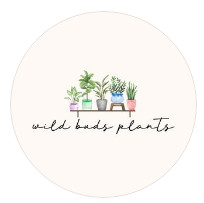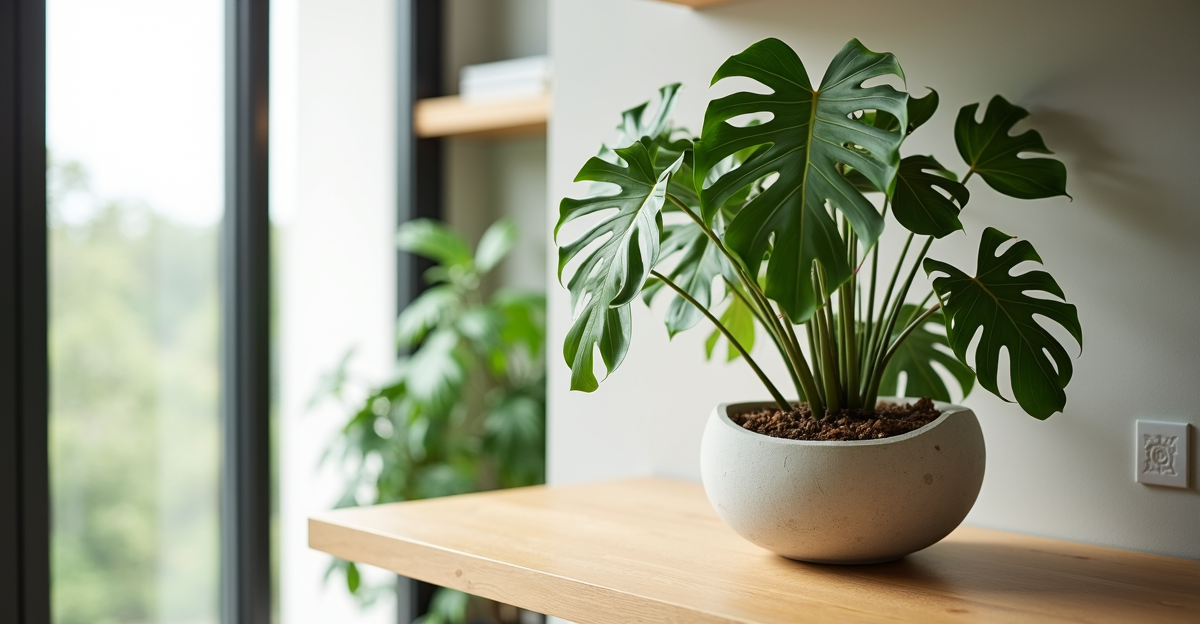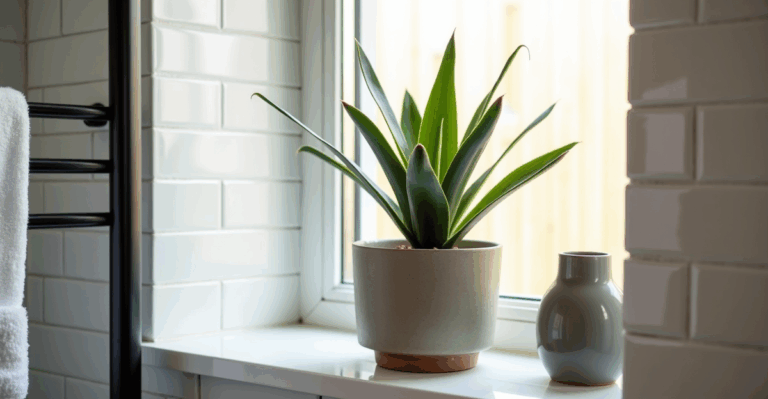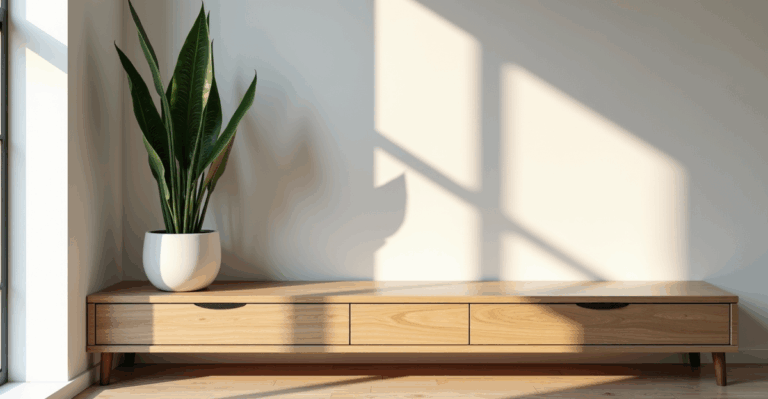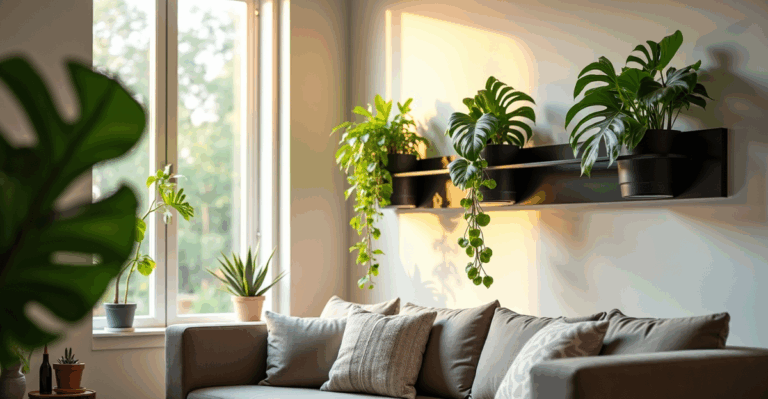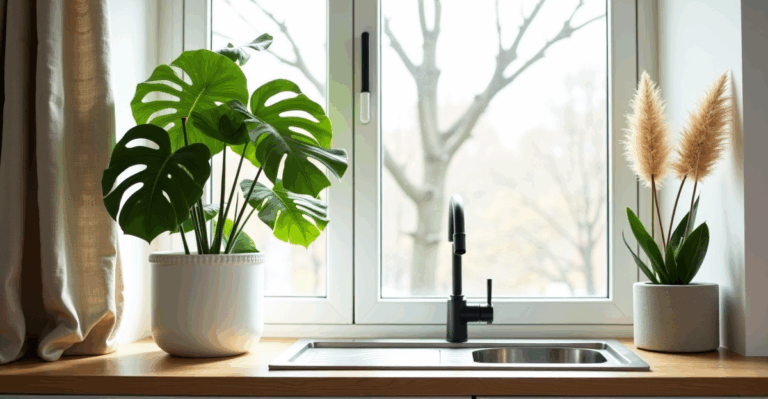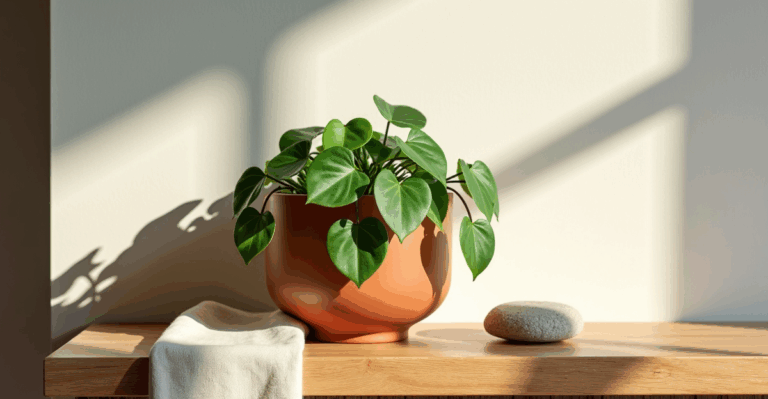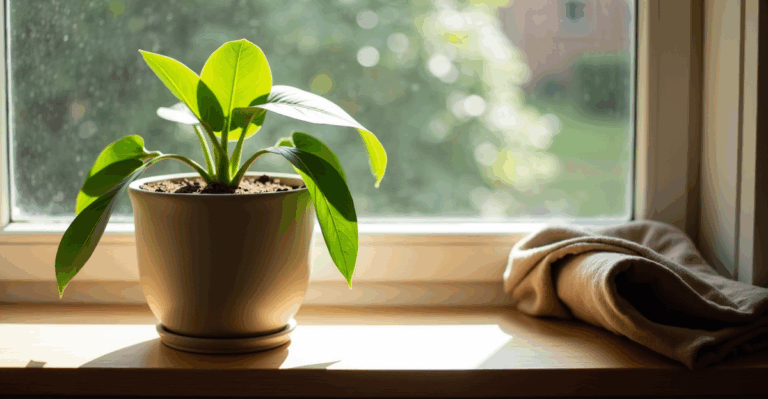Sunroom Styling with Philodendron: Small Space, Big Impact
You’ve got that sunroom – the one with floor-to-ceiling windows, perfect light, and maybe a little too much empty space. You bought a philodendron (or two, or five), placed it on the windowsill, and then… nothing. It just sits there. You walk past it daily, but it doesn’t belong. It feels like an afterthought, not a centerpiece. We’ve all been there. It’s not about adding more plants; it’s about choosing the right ones and placing them thoughtfully so they elevate the space, not overwhelm it. The key isn’t volume – it’s intention. And for a sunroom? Philodendrons are your perfect partners. They thrive in that bright, consistent light, and their trailing or climbing forms add graceful movement without demanding a huge footprint.
The most common mistake we see? Overcrowding. People pile plants shoulder-to-shoulder on every surface, thinking more equals better. But in a sunroom – especially a small one – it creates visual chaos and actually hinders the plants. Philodendrons need space to breathe, both physically and visually. They need that gentle, bright-indirect light flowing around them, not blocked by a cluster of other leaves. A single, well-placed philodendron in the right container becomes the focal point. It’s about quality over quantity, and letting the plant’s natural beauty do the talking.
Stop Overcrowding (It’s Not About How Many You Have)
We’ve all felt it: that urge to fill every inch of space with green. But in a sunroom, especially one with limited floor or shelf space, that’s a recipe for a stressed plant and a chaotic room. Philodendrons aren’t meant to be stuffed into tight corners; they’re meant to showcase their lush foliage and, often, their delicate aerial roots or trailing stems. The most effective styling uses negative space – the intentional empty areas around your plants. A single climbing philodendron on a small shelf, with a few inches of clear space on either side, looks intentional and calm. A trailing variety like Philodendron hederaceum (Heartleaf) on a bookshelf shelf, spilling just slightly over the edge, creates a soft, natural frame without overwhelming the shelf.
Why it works: Philodendrons are naturally adaptable, but they hate being cramped. Their roots need room to breathe in the pot, and their leaves need light from all angles. In a tight cluster, air circulation suffers, increasing the risk of pests like fungus gnats or spider mites. Plus, you can’t see the plant’s form or beauty when it’s buried under others. It’s like trying to appreciate a single flower in a dense bouquet – you miss the individual beauty.
Mini-Scenario: Imagine your sunroom has a narrow, 12-inch wide shelf next to the window. Instead of cramming three small plants onto it, choose one medium-sized pot (4-6 inches) of Philodendron bipinnatifidum (SPLIT-LEAF) on the shelf. Place it slightly off-center, with the front of the pot about 3 inches from the shelf edge. The leaves spill gently towards the window, catching the light, while the empty space around it makes the room feel larger and calmer. It’s the difference between a cluttered desk and a serene workspace.
Edge Case: If you have a very small window ledge (less than 6 inches wide), consider a wall-mounted planter or a small hanging macrame pot. A trailing philodendron like P. cordatum (Heartleaf) on a wall hook keeps the floor space clear and uses vertical real estate efficiently.
Light Placement = Your Secret Weapon (No Sunburn, No Scorch)
Sunrooms are magical because of their light, but it’s not all sunshine 24/7. The quality and intensity change dramatically based on the window direction and time of day. A south-facing window (in the northern hemisphere) delivers intense, direct sun in the afternoon – great for some plants, terrible for most philos. An east-facing window offers gentler, morning light, perfect for almost all philodendrons, especially in a small space. A west-facing window can be hot and harsh in the late afternoon, while north-facing is usually too dim for thriving growth.
What most miss: The distance from the window matters more than you think. Even a south window can be too harsh if the plant is right at the glass on a hot summer day. Philodendrons love bright, indirect light, meaning the light source is bright but not glaring directly on the leaves. They’ll tolerate a little more sun than a Calathea, but sunburn (brown, crispy edges) is a real risk if placed too close to a south window on a hot day.
The Fix: Place your philodendron just inside the window frame, not pressed against it. For south-facing windows, use a sheer curtain or position the plant 1-2 feet back from the glass. East-facing windows are ideal for most varieties; place them directly on a shelf or stand in front of the window. If your sunroom has glass doors leading to a patio, position plants on the side of the door where the light is diffused, not directly under the full sun of the door opening.
Mini-Scenario: You have a small sunroom with a large south-facing window. Your Philodendron scandens (a classic, easy-going type) is placed directly on the windowsill. By late afternoon, the leaves start turning yellow and crispy. Move it to a small side table, 18 inches back from the window. The light is still bright and warm, but the leaves are no longer in direct, scorching rays. It regains its vibrant green and starts growing more vigorously.
Trade-Off: If you only have a west-facing window, you’ll need to be extra vigilant about afternoon sun. Using a sheer curtain or moving the plant to a corner away from direct afternoon rays is a small effort for healthy leaves.
Drainage & Containers: Don’t Just Use a Pretty Pot (It’s Not Optional)
This is where most plant people trip up. They buy a beautiful ceramic cachepot and forget the drainage hole. Or they use a tiny pot for a large plant, thinking it’s cute. Philodendrons hate sitting in water. Their roots need oxygen, and too much moisture in the soil (especially in a small pot with limited drainage) leads to root rot – a silent killer that often starts with yellowing leaves. Small pots dry out faster, but they also hold water for longer if drainage is poor. It’s a double-edged sword.
The Practical Approach: Always use a pot with a drainage hole, even if you plan to use a cachepot. Place a small saucer under the pot to catch drips, not to hold water. For a sunroom setting where you want a clean look, a small saucer (like a 3-4 inch diameter) works perfectly under a 4-6 inch pot. It protects surfaces without looking bulky. If you’re using a cachepot (a decorative outer pot), ensure it’s not filled with water – the pot should sit on the saucer, not submerged in it. For a truly minimalist look, a single small, functional pot (like a 4-inch terra cotta or modern concrete planter) on a shelf is often more elegant than a large pot in a big cachepot.
Mini-Scenario: You’ve got a stunning ceramic cachepot for your Philodendron monstrosum (a larger variety), but the pot inside is a small plastic nursery pot. The plant is in a small pot with no drainage holes, and the cachepot holds water. You’ve been watering it as usual, but the soil stays wet for days. The leaves start yellowing from the bottom up. Repotting into a pot with drainage (even if it’s just a slightly larger pot with a hole) and using a well-draining mix (like 2 parts potting mix, 1 part perlite) fixes the problem. The plant recovers quickly, and the new pot looks intentional.
Edge Case: If you’re using LECA (clay pebbles) or PON (plantation organic nutrients) for hydroponic-style care, drainage is even more critical. LECA holds moisture longer than soil, so a pot with drainage is non-negotiable. A container that’s too small for the LECA system can lead to over-saturation. A 4-inch pot with drainage is ideal for most philos in LECA.
Styling with Small Space: Your Planter is Part of the Design
This is where your 3D-printed planter can be a game-changer. The right container doesn’t just hold your plant – it enhances the room’s style. A small, well-designed pot (4-6 inches) in a subtle texture or modern shape complements the sunroom’s clean lines or vintage charm without shouting. It becomes a subtle design element, not just a container.
Why 3D Printing Wins Here: Standard planters are often too big, too heavy, or have unattractive drainage holes. A 3D-printed planter can be designed to be perfectly sized for a small space, lightweight (so it’s easy to move for cleaning or repositioning), and feature subtle, intentional textures that match the sunroom’s aesthetic – whether it’s a smooth matte finish for modern, a slight organic texture for boho, or a clean geometric shape for minimalist. It fits perfectly on a narrow shelf, a small corner table, or even a slim window ledge, with no wasted space.
Mini-Scenario: Your sunroom has a narrow, 12-inch wide window ledge. You want to style it with a small philodendron but struggle to find a pot that’s both functional (has drainage) and looks good in that tight space. A standard 4-inch pot is too big and looks clunky. A 3D-printed planter, designed specifically for a 4-inch pot but with a sleek, tapered shape and a subtle matte finish, fits perfectly. It doesn’t overwhelm the ledge, its design complements the room’s style, and the clean lines make the plant the star. The small size of the pot also means the plant’s growth is managed, keeping it from becoming a sprawling mess.
Trade-Off: 3D-printed planters aren’t always cheaper than standard pots (they’re often premium), but their design and fit for small spaces justify the cost. You’re not just buying a pot; you’re buying a piece of functional art that makes styling easier.
The Small-Space Styling Mindset: Less is More, But It’s Okay
Styling a sunroom with philodendrons for small space isn’t about deprivation. It’s about curating. It’s about choosing a plant that fits the light, the room size, and your style. It’s about giving that one plant the space it needs to thrive and shine. A single, well-chosen philodendron in a perfectly sized pot, placed thoughtfully where it gets the light it needs, becomes the soul of the room. It’s more powerful than a dozen plants in mismatched pots all fighting for attention.
This approach also means less maintenance. You don’t have to water three plants that all need different schedules. You don’t have to worry about pests spreading through a crowd. You can truly see the plant, appreciate its growth, and enjoy the quiet calm it brings to your sunroom. It’s not about filling space; it’s about enhancing the space you have.
Key Takeaways
- One well-placed philodendron in a small, functional pot beats a crowded shelf. It thrives, looks intentional, and makes the room feel larger.
- Light placement is everything: Avoid direct afternoon sun on south windows, use sheer curtains or move plants slightly back, and let east light be your friend.
- Drainage is non-negotiable: Even in a small space, a pot with drainage (and a small saucer) is essential for plant health.
When you’re ready to grow your sunroom into a space that feels intentional and alive, not just filled with plants, the right container makes all the difference. It’s not just about holding the soil; it’s about holding the vision for your space. If tiny footprint styling is next on your list, you’ll find beautiful, functional options—explore our 3D-printed planters.
